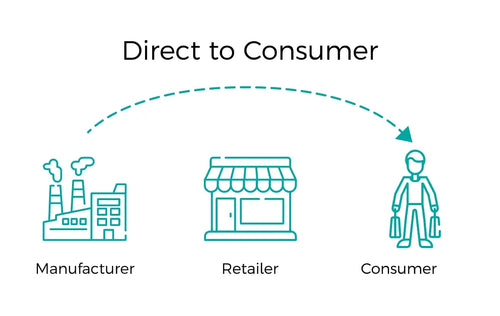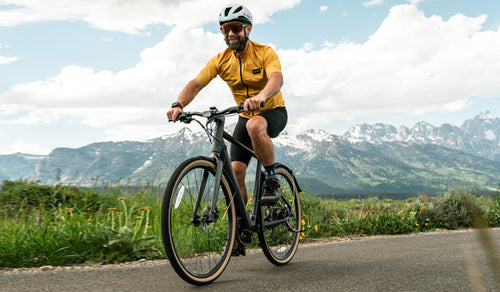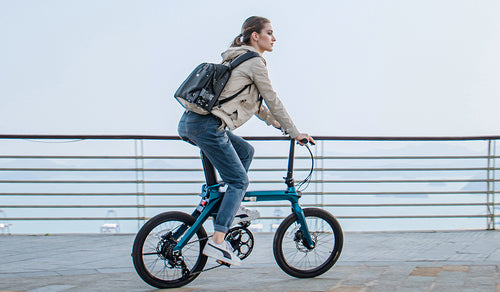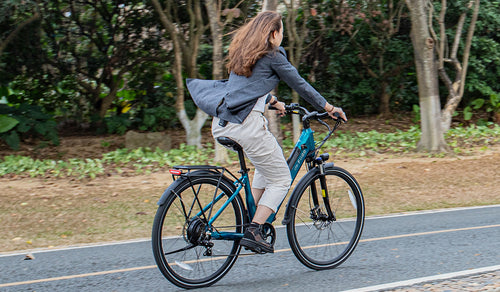As electric bikes gain popularity for both commuting and leisure, a common concern among prospective and current owners is their performance in wet weather conditions, particularly in the rain. This article will delve into whether it's safe to ride an electric bike in the rain, what precautions should be taken, and how to maintain your e-bike if you regularly ride in wet conditions. Additionally, we'll highlight how Fiido electric bikes are designed to handle adverse weather conditions.

Understanding Electric Bike Water Resistance
What Makes an E-Bike Water-Resistant?
Electric bikes are typically designed with some level of water resistance to handle various weather conditions. The key to this capability lies in the bike’s IP (Ingress Protection) rating, which indicates how effective its seals are against environmental elements like dust and moisture.
- IP Ratings: Most e-bikes are rated at least IPX4, which means they are protected against water splashes from all directions, sufficient to withstand light to moderate rain. However, it is important to check the specific IP rating of your e-bike model to understand its level of water resistance.
Critical Components Protection
The main components that need protection in an e-bike are the motor, battery, and display:
- Motor: Usually enclosed within a waterproof casing that prevents water from entering and causing damage.
- Battery: Often designed with a water-resistant casing, though the connection points are a vulnerability and should be checked regularly for moisture.
- Display and Control Systems: These are generally water-resistant but should be treated with care and protected from heavy rain when possible.
Riding Safely in the Rain
Riding an e-bike in the rain involves more than just understanding the bike’s capabilities; it also requires appropriate safety measures to ensure a safe ride.
Enhanced Visibility
- Lights: Always use front and rear lights. Rain and grey skies can significantly reduce visibility.
- Reflective Gear: Wearing clothing with reflective elements helps other road users see you in poor weather conditions.
Tire Traction and Handling
- Tires: Use tires suitable for wet conditions. These have better grip and can reduce the risk of slipping on wet surfaces.
- Reduced Speed: Slow down to adjust to longer stopping distances in the rain. Braking capacity is diminished on wet roads.

Maintenance Tips for Wet Weather Riding
Regular maintenance is key to ensuring your e-bike remains in good condition, especially if you frequently ride in the rain.
Post-Ride Care
- Cleaning: Always clean your e-bike after riding in the rain. Dirt and grime can mix with rainwater and enter components, potentially causing damage or rust.
- Drying: Dry your bike thoroughly after cleaning. Focus on the chain, gears, and any metal parts to prevent rust.
Regular Inspections
- Electrical Components: Check all electrical connections regularly for signs of water ingress or corrosion.
- Battery Care: Ensure the battery compartment is dry and clean. Moisture here can lead to serious electrical issues.
Choosing the Right E-Bike for Rainy Conditions
When selecting an e-bike for areas with frequent rain:
- High IP Rating: Look for bikes with a high IP rating to ensure maximum protection against water.
- Well-Protected Components: Opt for bikes with well-enclosed motors and battery casings.
Fiido Electric Bikes: Ideal for All Weather Conditions
Fiido electric bikes are designed with the challenges of all-weather riding in mind, making them an excellent choice for those living in rainy climates.
- Robust Waterproofing: Fiido bikes come with high IP ratings, ensuring that critical components are protected even in heavy downpours.
- Durable Build: The build quality of Fiido bikes emphasizes durability and reliability, which is crucial for riding in adverse weather conditions.
- Portability: Many Fiido models are foldable, making them easy to carry indoors or under cover when not in use, further protecting them from the elements.

Conclusion
Riding an electric bike in the rain is definitely feasible with the right precautions and proper maintenance. Understanding your bike's limitations, preparing for reduced visibility, and ensuring you have suitable tires can all contribute to a safer wet-weather riding experience. With their thoughtful design and robust construction, Fiido electric bikes offer reliability and performance, rain or shine, making them a smart choice for any weather.
This comprehensive guide should provide you with all the information needed to safely and effectively use your e-bike in the rain, ensuring many enjoyable and secure rides regardless of the weather.













